universityofmichigan
Latest

'Metamaterial' can switch from soft to hard - and back again
University of Michigan researchers have developed a technique for a new 'metamaterial' that can change its level of solidness, but without damaging or changing the material itself. Metamaterials are man-made materials whose properties come from the way it's constructed rather than what it's composed from. Scientist can then tinker with its structure to affect its properties. Those effects can be very broad: researchers were able to create a camera that doesn't require a lens to work using different man-made materials. This one's different again.

Protein fingerprinting could shed light on Alzheimer's
Scientists know that the proteins in our bodies can sometimes fold and form clumps called amyloids, which lead to neurodegenerative diseases. However, they still don't fully understand the whole process -- there's just no efficient way to examine the clumps. Since understanding amyloid formation could be the key to preventing or developing treatments for conditions like Alzheimer's and Parkinson's, a team of researchers have developed a technique to measure individual protein molecules' properties.
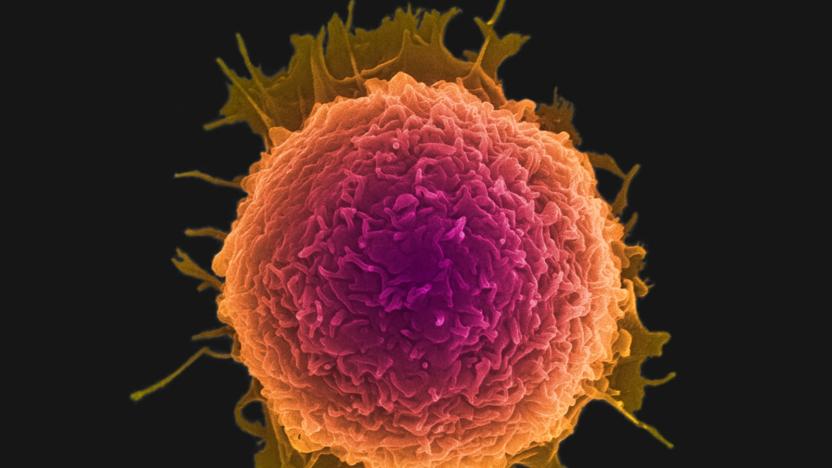
Nano-sized discs teach your body to fight cancer
In the future, getting customized cancer treatments might just be a matter of injecting virtually invisible discs into into your body. University of Michigan scientists have had early success testing 10nm "nanodiscs" that teach your body to kill cancer cells. Each disc is full of neoantigens, or tumor-specific mutations, that tell your immune system's T-cells to recognize those neoantigens and kill them. When you pair them up with immune checkpoint inhibitors (which boost the T-cells' responses), they can not only wipe out existing tumors, but prevent them from reemerging later.

Astronomers spot a tiny dwarf planet beyond Pluto
Pluto, Ceres, Eris, Makemake and Haumea have another possible candidate to consider for their dwarf planet squad. A team of researchers have discovered the new, tiny candidate deep within the Kuiper belt, 8.5 billion miles from the sun. It's officially called the 2014 UZ224, because they first spotted it in 2014 -- the reason we're only hearing about it now is because it took two years to confirm its existence.
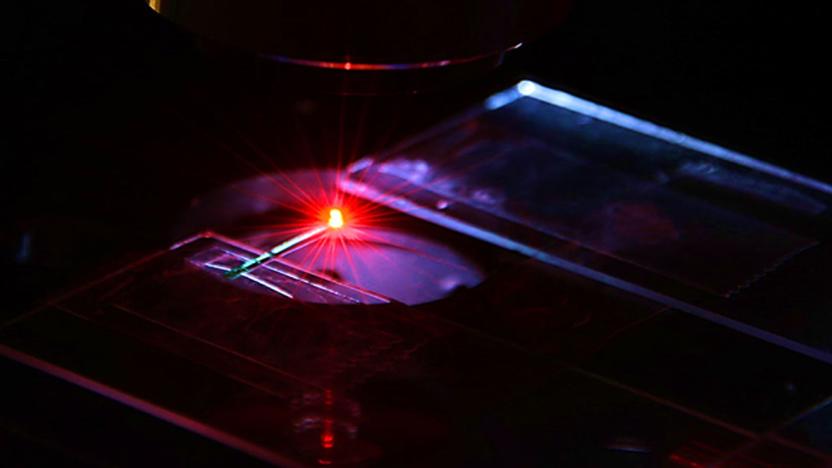
Scientists build a laser using human blood
No, this isn't one of your childhood sci-fi dreams brought to life -- it's real. University of Michigan researchers have developed a medical observation laser where human blood is a key ingredient. When the team shined a laser into a small cavity full of dye-infused blood, they discovered that they could process the laser's light according to their needs. They could amplify the light to exaggerate small changes in cell activity, or filter it to reduce background noise. Existing techniques combine dyes with infrared or visible light in a way that makes it difficult to spot tiny differences.

ForcePhone software makes any mobile device pressure sensitive
A team from the University of Michigan have developed a novel means of giving any mobile device the same sort of force-sensitive capabilities found on Apple's flagship iPhone 6s. Dubbed ForcePhone, the software leverages two features that literally every smartphone has -- a microphone and a speaker -- do to what very few OEM device manufacturers have managed.

App study reveals one in three of us aren't getting enough sleep
If you get less than seven hours' of sleep a night, you're among the one in three Americans who aren't getting enough zzz's. A team of researchers from the University of Michigan used the data they gathered from an anti-jetlag app they released a few years ago to study the roles society and biology play in our sleep schedules. They got some pretty interesting information out of the app: for instance, people in the Netherlands seem to get the highest average sleep (8 hours and 12 minutes), while folks in Japan and Singapore get the lowest (7 hours, 24 minutes).
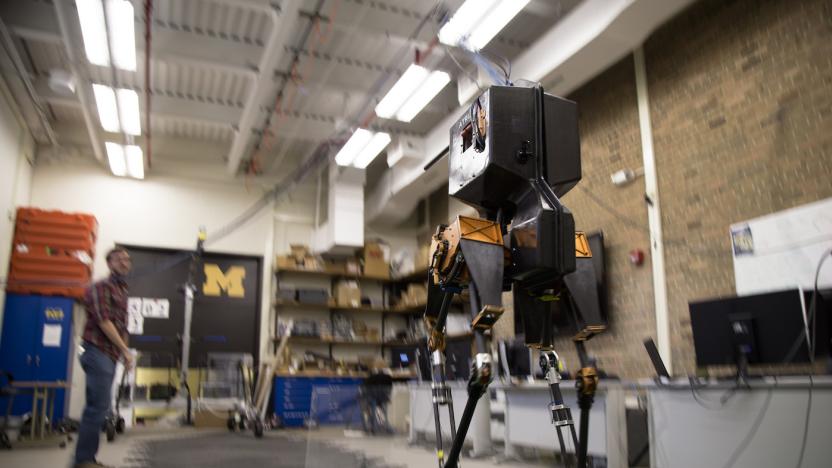
U of M's Marlo robot uses algorithms to conquer uneven terrain
Robots walking unaided on flat ground is tough enough as it is -- just look at last year's class of DARPA Challenge failures -- so when one can handle uneven terrain in any direction (not just a straight line), we take notice. The latest example is Marlo, a joint project between University of Michigan's Jessy Grizzle and Oregon State University's Jonathan Hurst. The key difference here is how it achieves this feat: a bank of algorithms containing different instructions for different walking styles.
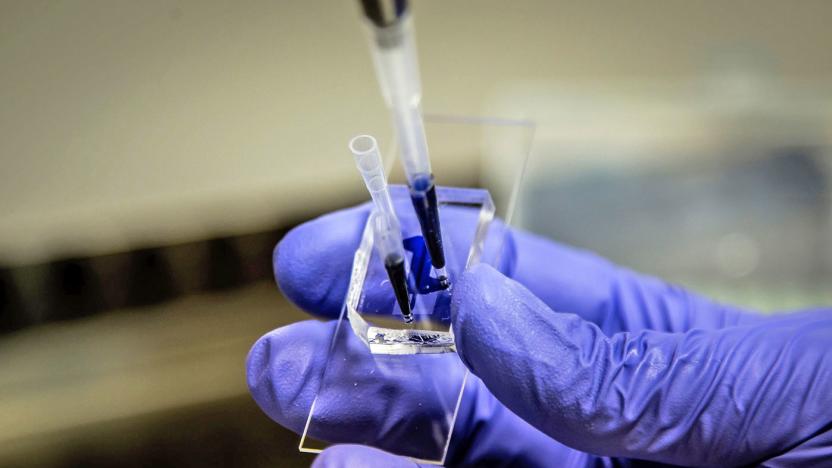
Special microchip can prevent kidney damage from medication
Doctors have to make sure patients are getting just the right dose of medication, because some drugs (especially those administered to ICU patients) can cause kidney damage. This "kidney on a chip" device developed by a team of University of Michigan researchers could make the process easier. It replicates the environment inside our kidneys and shows how each medicine affects the organ.

Researchers develop ice-repellent coating for windshields and more
Having to scrape ice off your windshield in freezing temperatures before heading off to work is awful. When ice builds up on airplanes and other equipment, it can go from being a nuisance to causing serious danger. To combat icy buildup, researchers at the University of Michigan developed a spray-on ice repellent coating that can be applied to equipment, aircraft and car windshields to make removing the frozen stuff a breeze. In fact, the team of engineers say all it takes to clear off a treated surface is the force of gravity or a light breeze thanks "iceophobic" material.
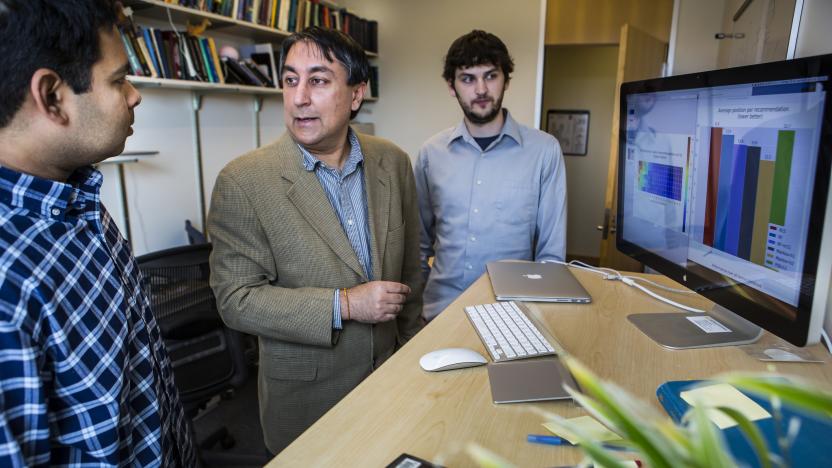
Even your academic advisor might one day be a robot
We Google things we're too lazy to remember or ask another human. We've become accustomed to asking Siri and Cortana about the weather. The current generation of artificial intelligence can pull facts from the web, keep track of your appointments and even crack jokes. What if there were a virtual assistant to help you make real-life decisions, like whether you should start a brewery or go to business school? Project Sapphire, a collaboration between IBM and the University of Michigan, is aimed at building an artificially intelligent academic advisor that guides undergraduate students through their course options, helps pick extracurricular activities and eventually dishes out advice on their careers.

ICYMI: Tiny sperm motor, tablet for the blind and more
#fivemin-widget-blogsmith-image-597195{display:none;} .cke_show_borders #fivemin-widget-blogsmith-image-597195, #postcontentcontainer #fivemin-widget-blogsmith-image-597195{width:570px;display:block;} try{document.getElementById("fivemin-widget-blogsmith-image-597195").style.display="none";}catch(e){} Today on In Case You Missed It: Male fertility issues usually contribute to about half the cases of infertility in couples, which is why some German researchers invented a tiny little Spermbot designed to help sperm swim faster. The Spermbot is a tiny metal helix that uses a rotating magnetic field to help drive sperm towards fertilizing an egg.

Morphing Braille tablets offer graphics to the blind
You can use voice dictation and feedback to navigate a phone or tablet if you're blind, but that doesn't really answer all your needs. What if you need to read charts or other graphics? The University of Michigan has an answer. It's developing a Braille display that uses microfluidic bubbles (filled with air or liquid) to produce the format's signature bumps on demand. Unlike existing Braille displays that rely on motors, this doesn't use up much space -- the school envisions mobile tablets that pop up dots whenever (and importantly, wherever) you need them.

Lie detection software learns from real court cases
Machine learning has been used to make computers guess your age, count calories and even do our jobs, but University of Michigan researchers are applying it to lie detection. In this case they used testimony from real court cases to try and decipher a liar's tells when the stakes are at their highest. Considering both the words and gestures of the person speaking, they claim it was up to 75 percent accurate at identifying if a person is lying or telling the truth, while humans could only tell 50 percent of the time.

Kirigami-inspired solar cells can track the sun without motors
Researchers at the University of Michigan announced on Wednesday that they have developed a method of keeping solar cells turned toward the sun without the need for heavy and energy-hungry motors. Their method is based on the Japanese art of Kirigami -- like origami but with cuts in addition to folds. The team's panel is printed on a flexible kapton substrate which has dash-like cuts running across its surface. When stretched, the panel forms a mesh with each section twisting slightly. The degree of twist, which will allow the panel to follow the path of the sun, depends on how much the panel is stretched. "The design takes what a large tracking solar panel does and condenses it into something that is essentially flat," Aaron Lamoureux, lead author on the paper published in Nature Communications, said in a release.

Heartbeat chip tests medicine based on your natural rhythms
Scientists can simulate organs on chips when testing medicine, but mimicking your natural rhythm is another matter -- it's hard to know if those drugs will behave properly under the stresses of your body. That won't be a problem when the University of Michigan's newly developed testing chip comes into play. The device uses microscopic, gravity-powered fluid channels to replicate heartbeats and other natural flows (such as brain signals) when testing chemicals. You'll know if that treatment works properly when the patient's heart is racing, for example. And unlike previous attempts at emulating heartbeats, you don't need to stick around pumping fluid yourself -- you can conduct long-term tests that reflect what would happen in a real body over time.

Super-thin Kevlar layers promise safer, slimmer batteries
Scientists have spent a lot of time trying to lengthen battery life, but safety and thickness matter, too. Just ask Boeing about that first problem -- its 787 Dreamliner was grounded for months thanks to battery fires. However, a group of University of Michigan researchers may have found a way to make lithium-ion energy packs that are safer and slimmer at the same time. The team has developed Kevlar-based, nano-sized membranes that insulate the electrodes in a battery while still allowing lithium ions to pass through and create a proper circuit. The extra-thin layers should not only reduce the chances of short circuiting, but allow for more energy in a given space. You could get away with thinner batteries in smartwatches and other devices without giving up battery life... or worrying that your device will spontaneously combust, for that matter.

Tech companies want you to have free web encryption
Ideally, you'd encrypt everything you do on the web to keep it away from spies and thieves. However, getting a security certificate to enable that encryption on your own site can be both costly and difficult -- many people don't even bother. That's not good enough for the Electronic Frontier Foundation, so it's partnering with Mozilla, Cisco and other tech firms to launch Let's Encrypt, an authority that will hand out and manage free certificates for anyone that wants them. Besides eliminating the cost barrier, the effort will also scrap a lot of the bureaucracy and hard work that's normally involved -- all you'll have to do is run a program, which should take seconds.

Combating counterfeiters could soon be as easy as breathing
Researchers at the University of Michigan have developed an iridescent material that reveals hidden words or images in the right setting. What exactly causes the message to show? A single breath. That's right, breathing on the plastic sheets makes whatever has been inscribed on it visible -- thanks to a little instant humidity -- but otherwise hidden from view. Images are created using a custom ink-jet printer to output a water-repellant coating in the desired shape. When breathed on, water condenses to show the image -- similar to the manner in which a peacock's feathers lose their glimmer when they're wet. The group aims for the material to be used to combat counterfeiters, replacing holograms on passports and more.

University of Michigan activates antimatter 'gun,' cartoon supervillians twirl moustaches anew
At the University of Michigan, an international team of physicists has begun experimenting with its tabletop-sized super laser, modding it into an antimatter "gun." It's not quite a black hole-firing pistol, but we're slightly terrified nonetheless. Up until now, machines capable of creating positrons -- coupled with electrons, they comprise the energy similar to what's emitted by black holes and pulsars -- have needed to be as large as they are expensive. Creating these antimatter beams on a small scale will hopefully give astrophysicists greater insight into the "enigmatic features" of gamma ray bursts that are "virtually impossible to address by relying on direct observations," according to a paper published at arXiv. While the blasts only last fractions of a second each, the researchers report each firing produces a particle-density output level comparable to the accelerator at CERN. Just like that, the Longhorns/Wolverines super-laser arms-race begins again.








